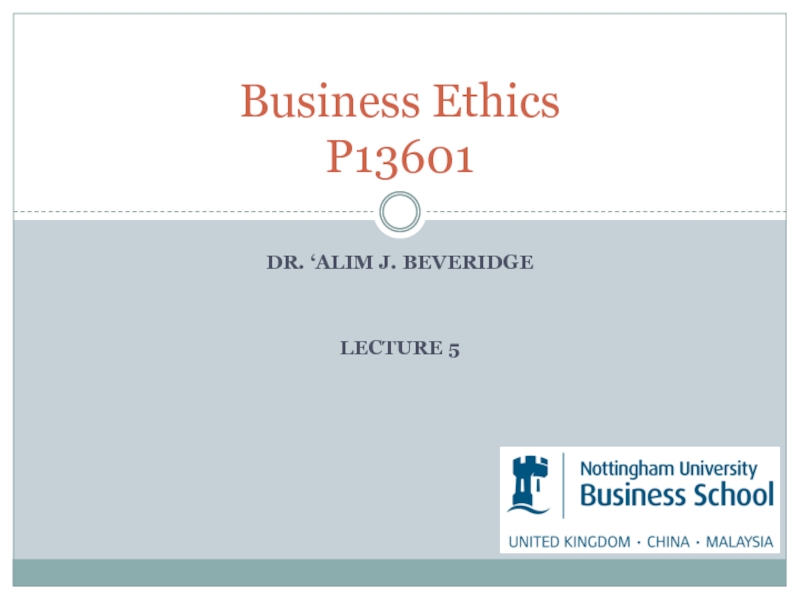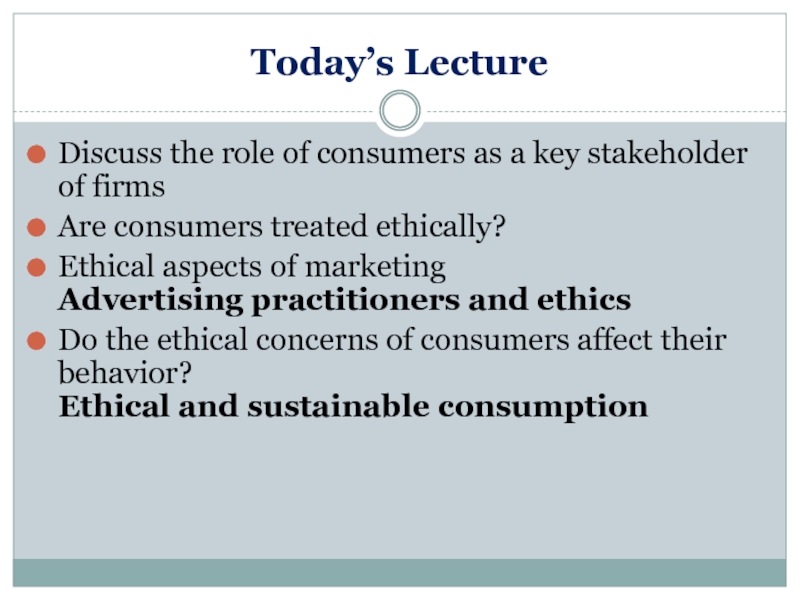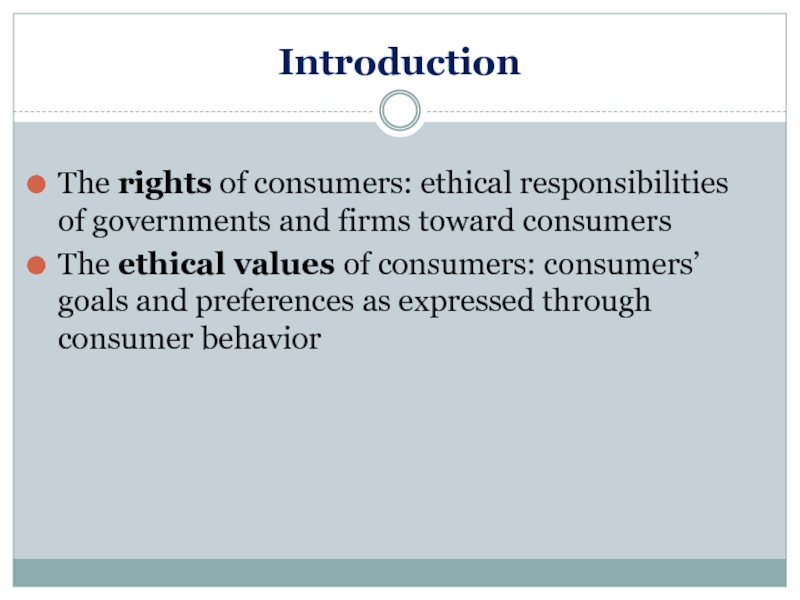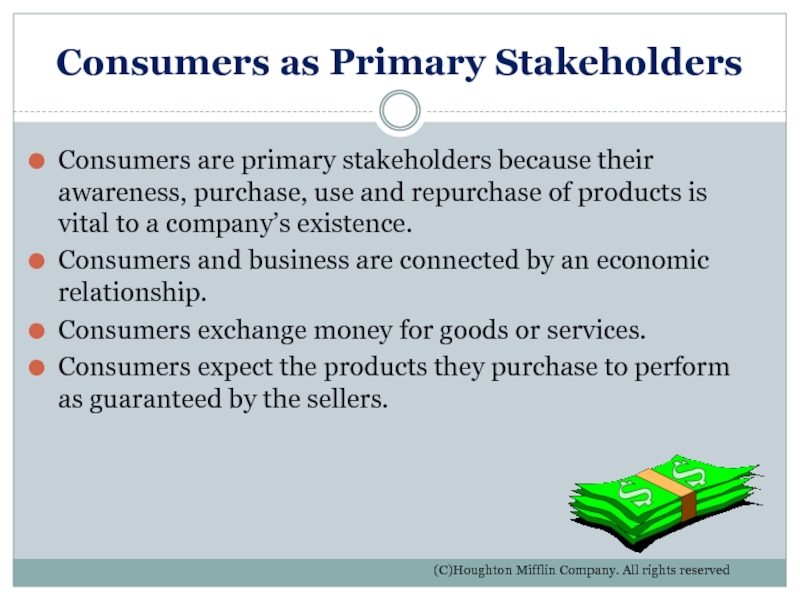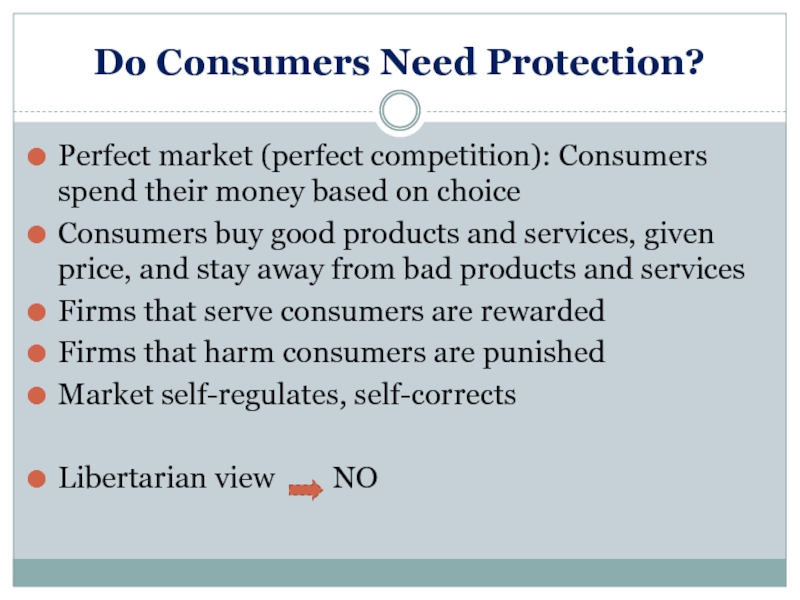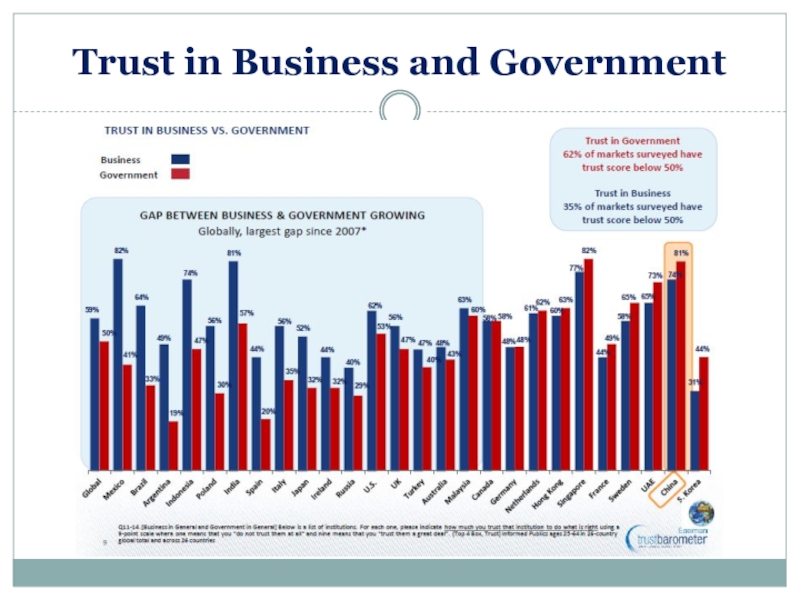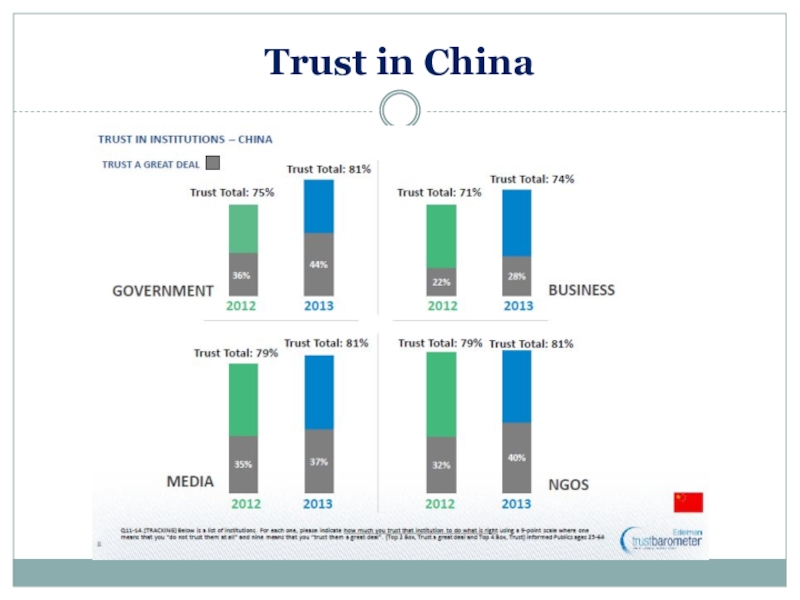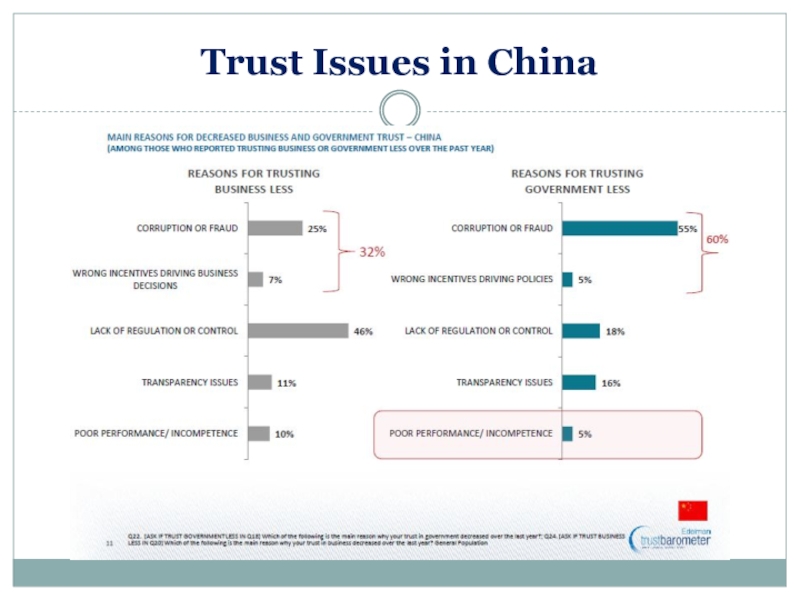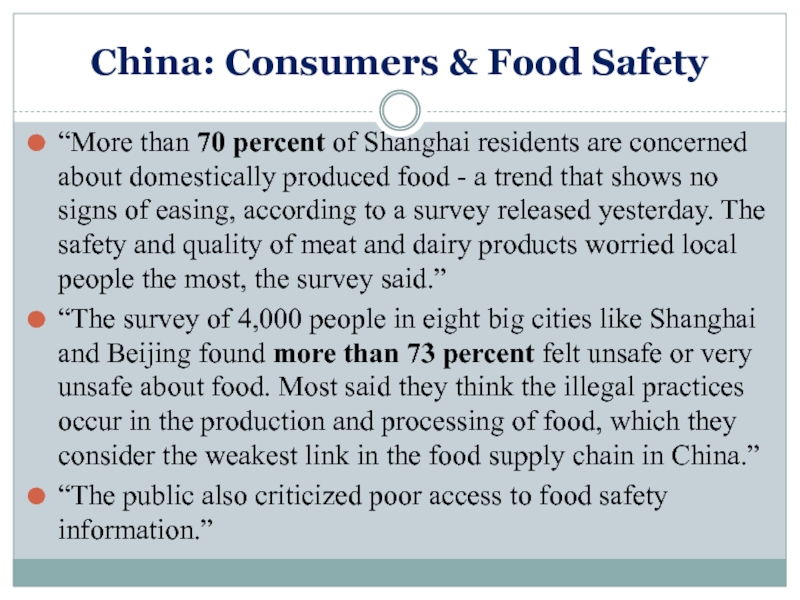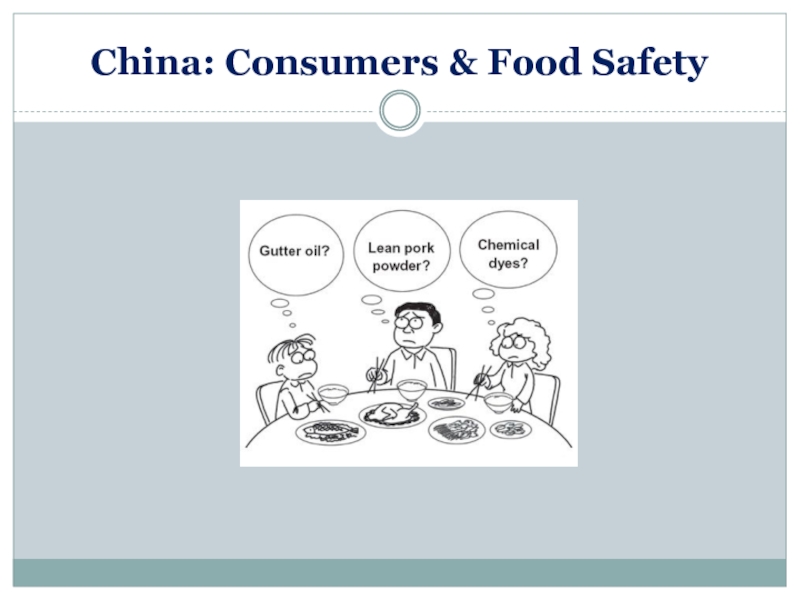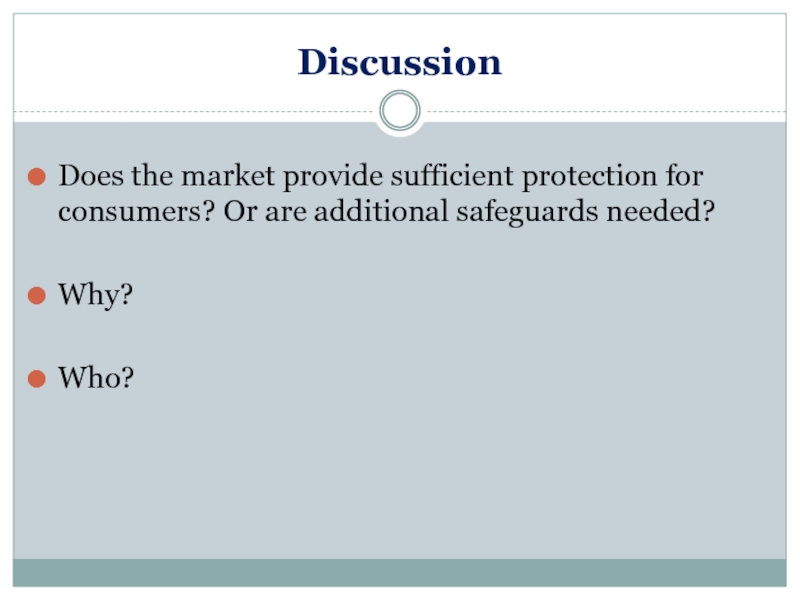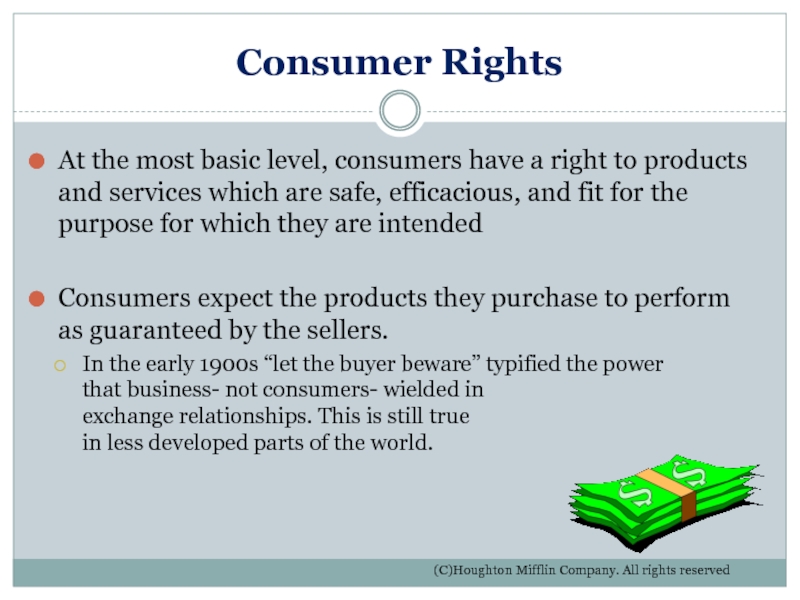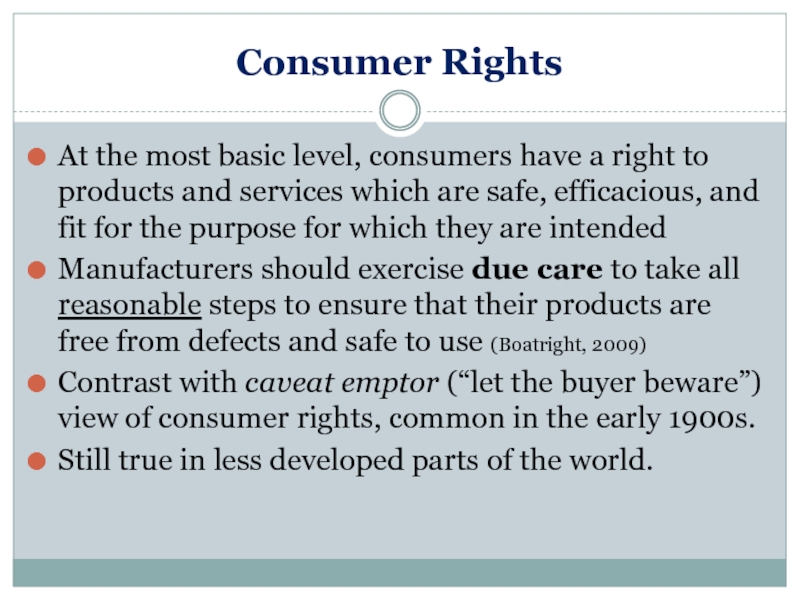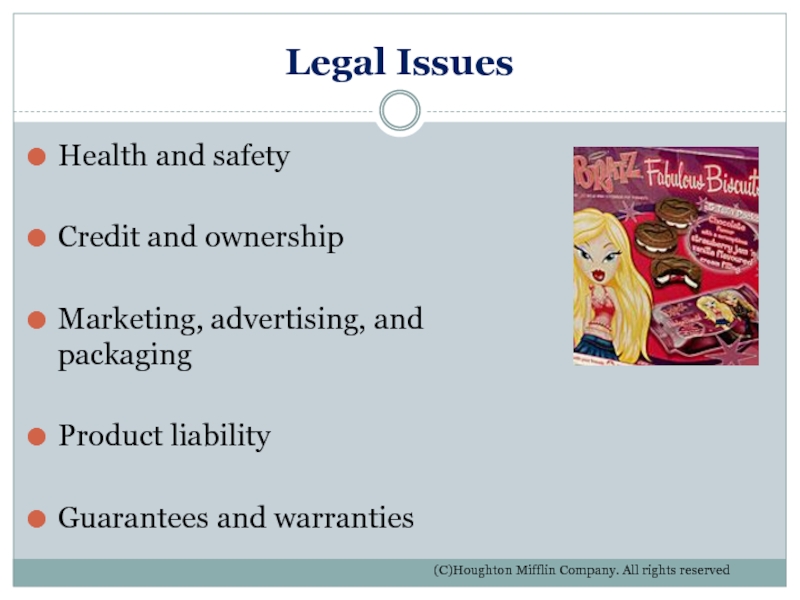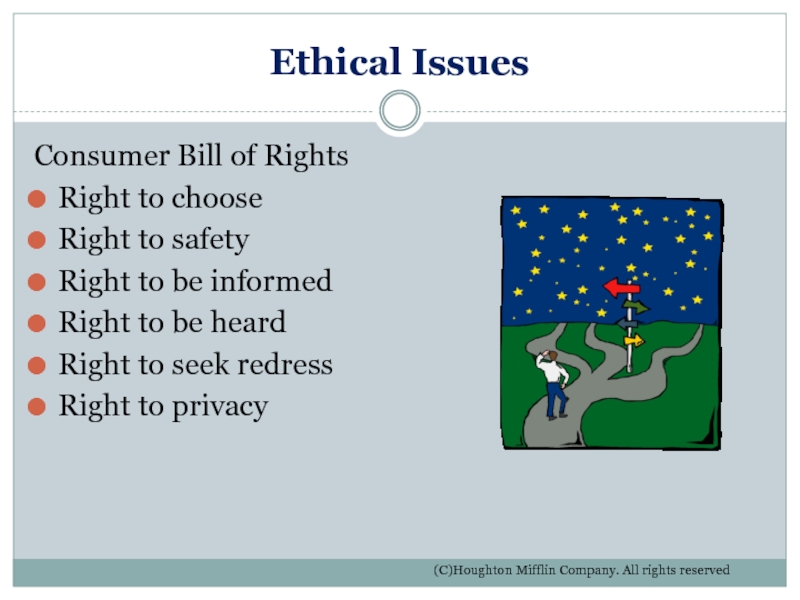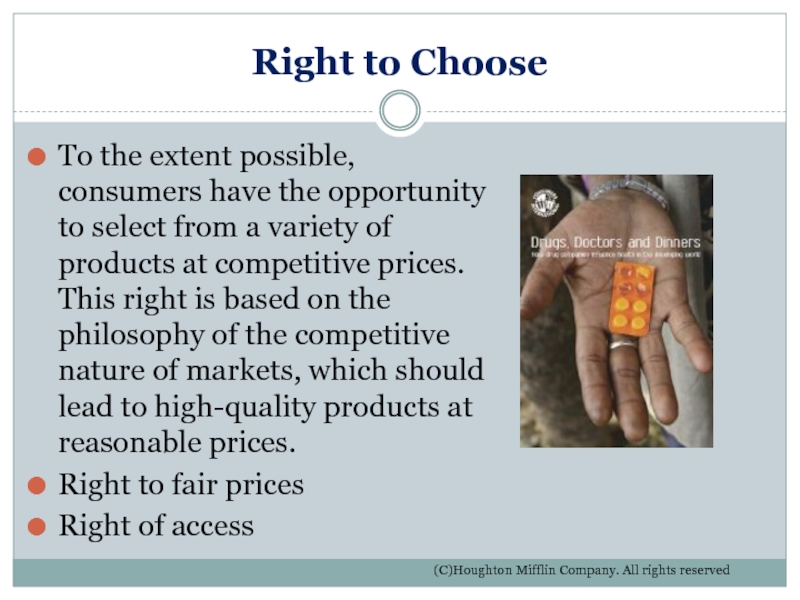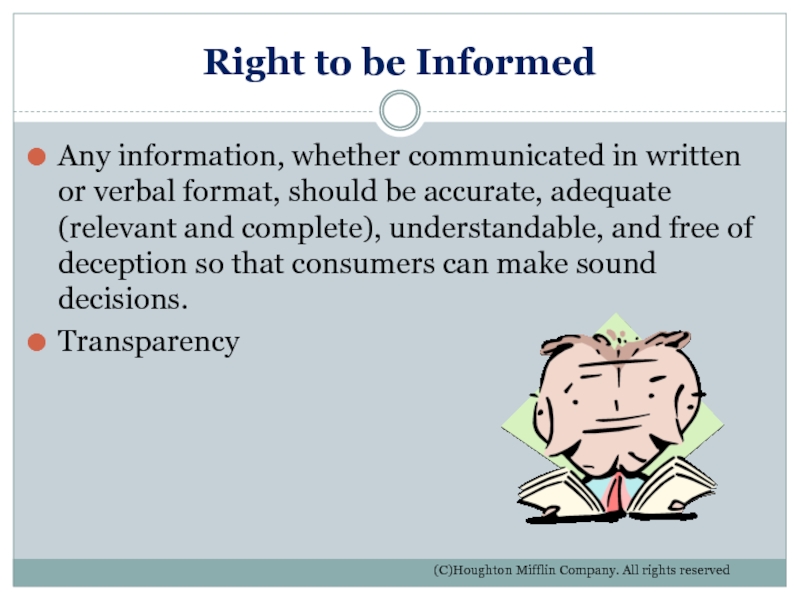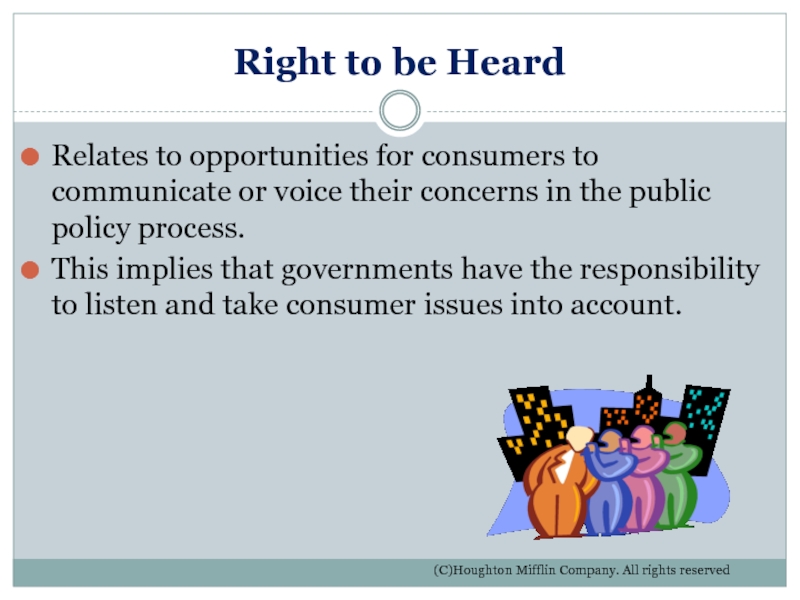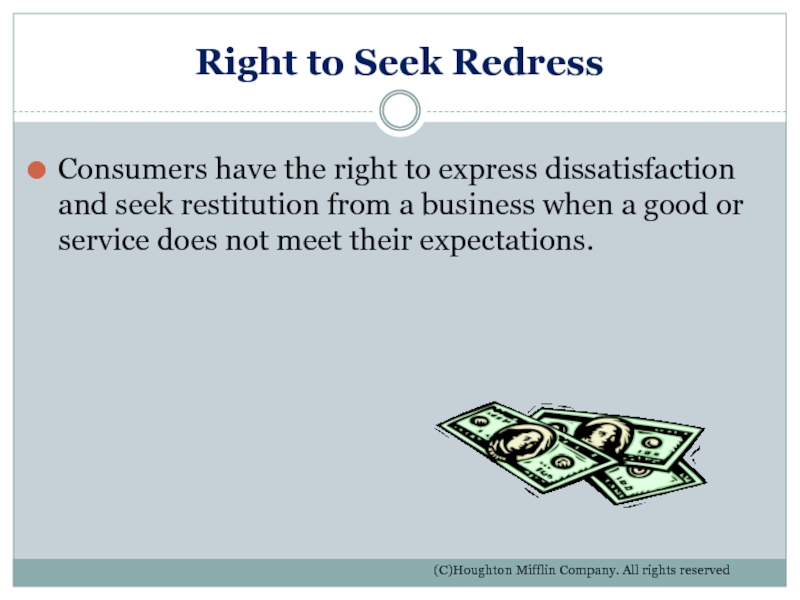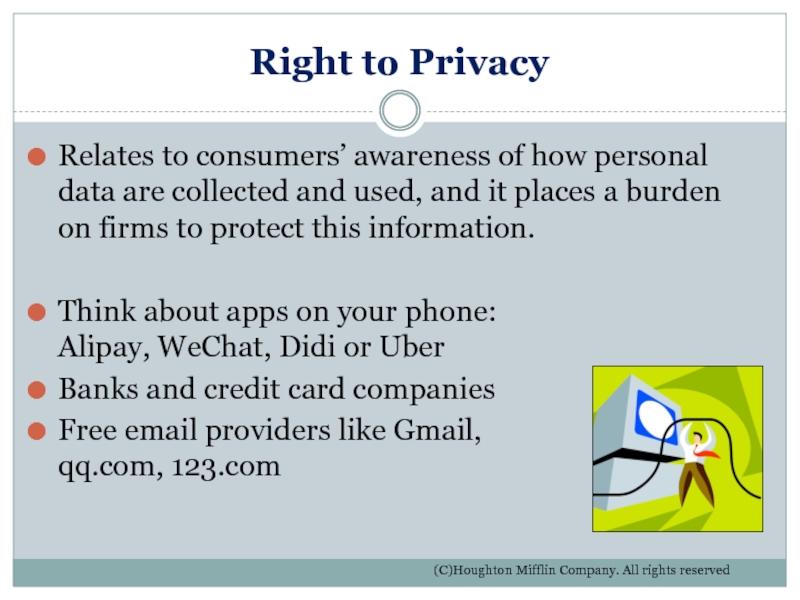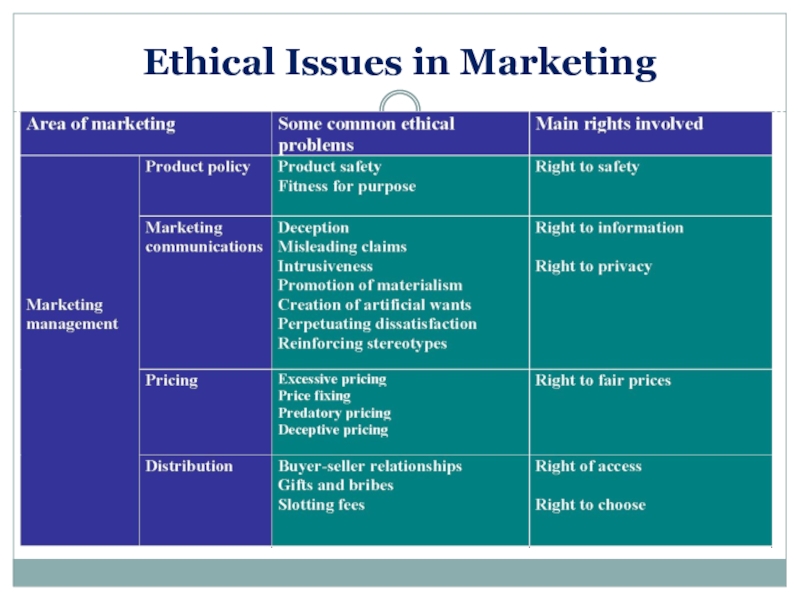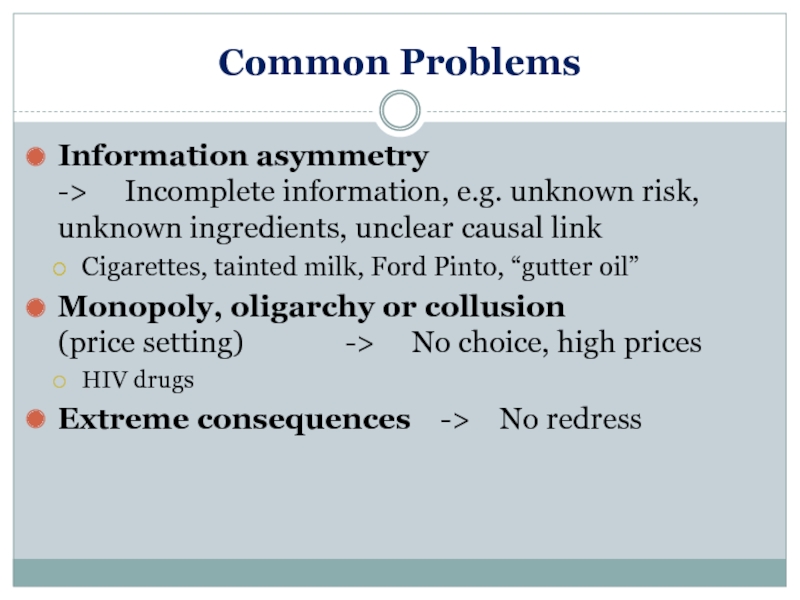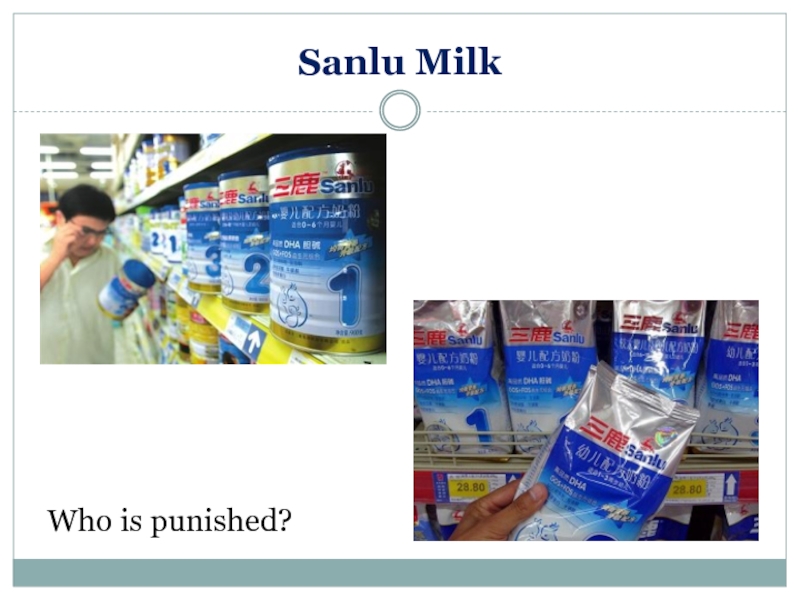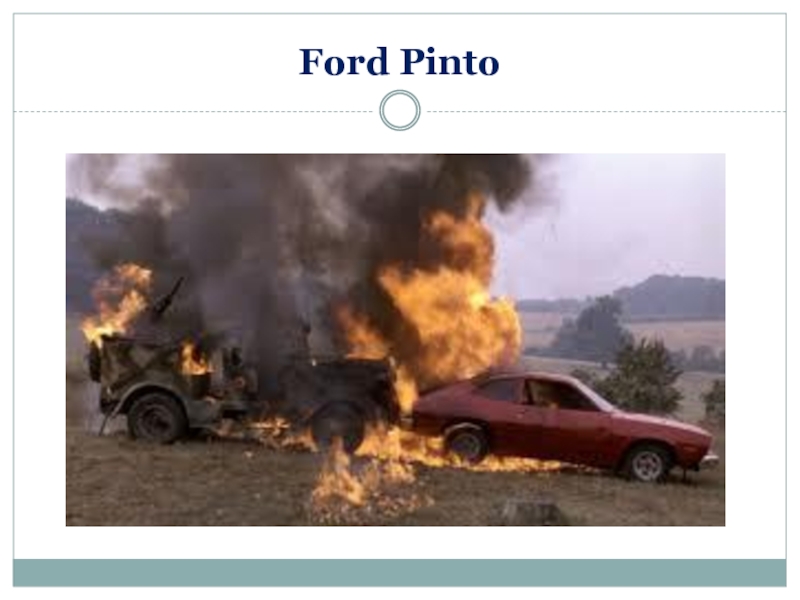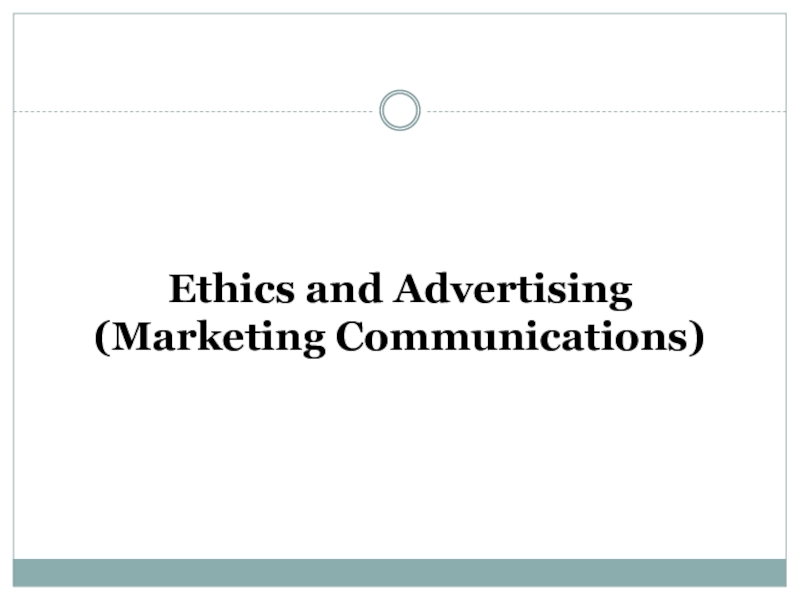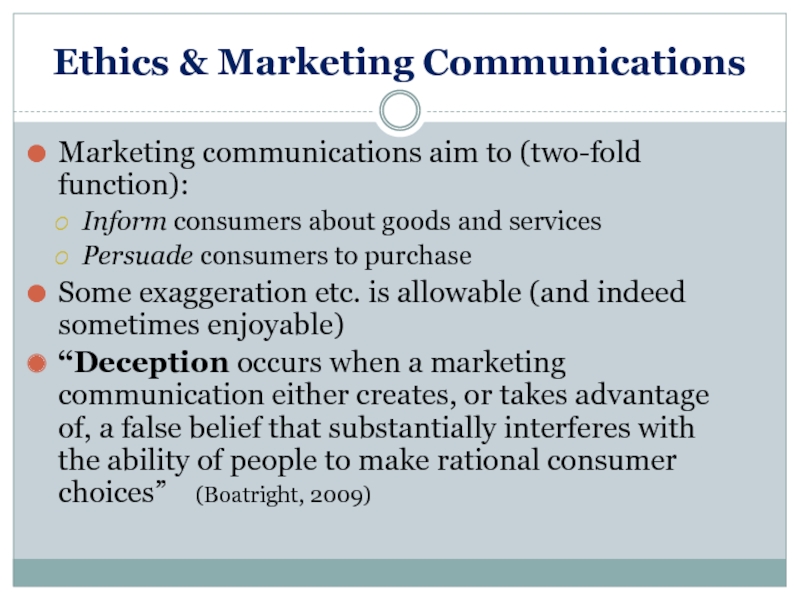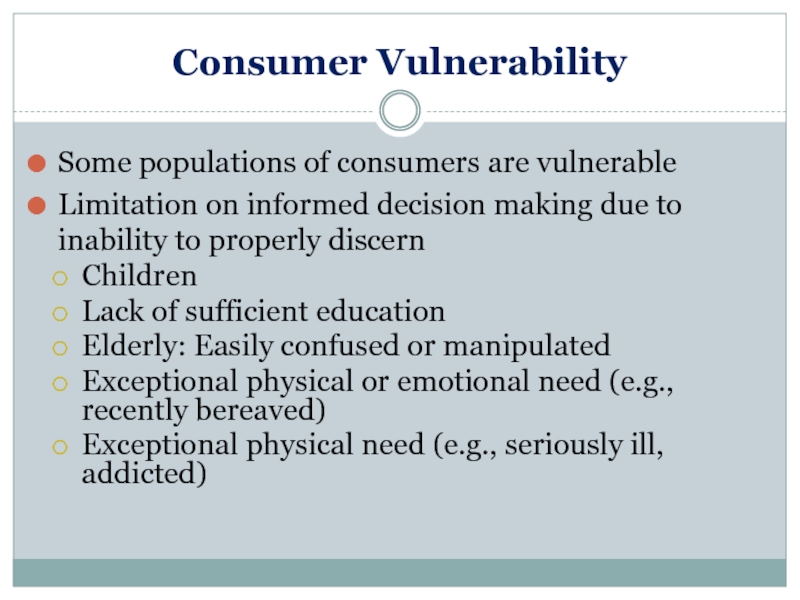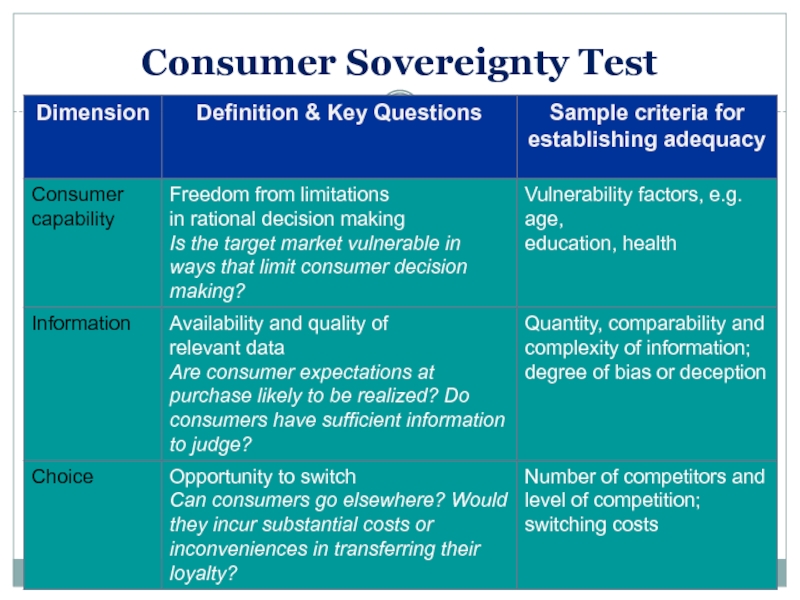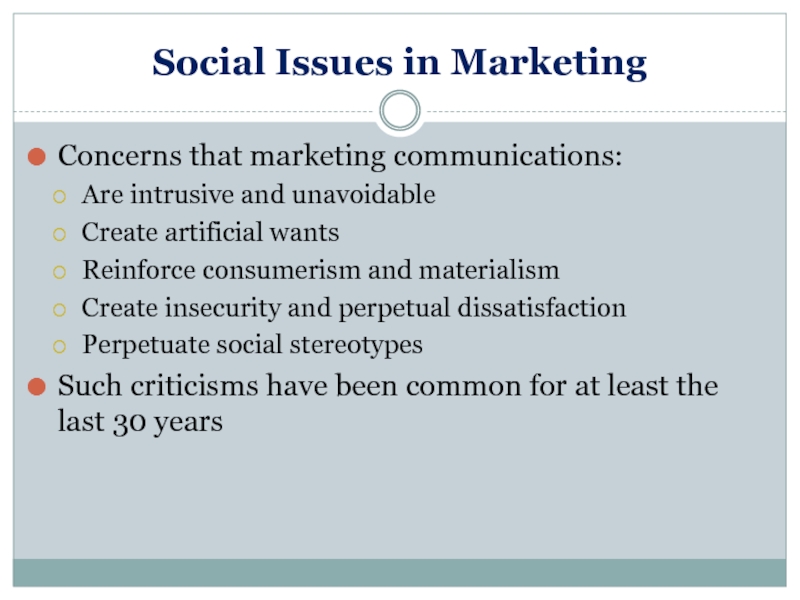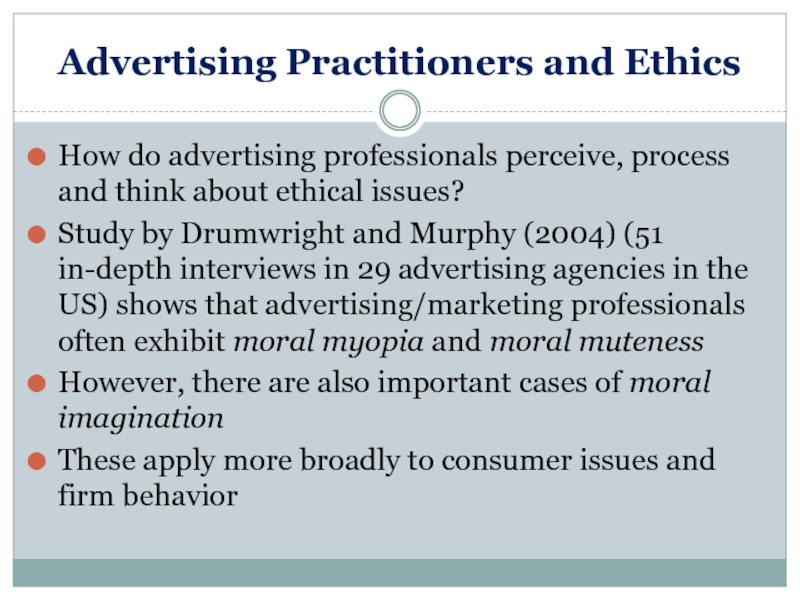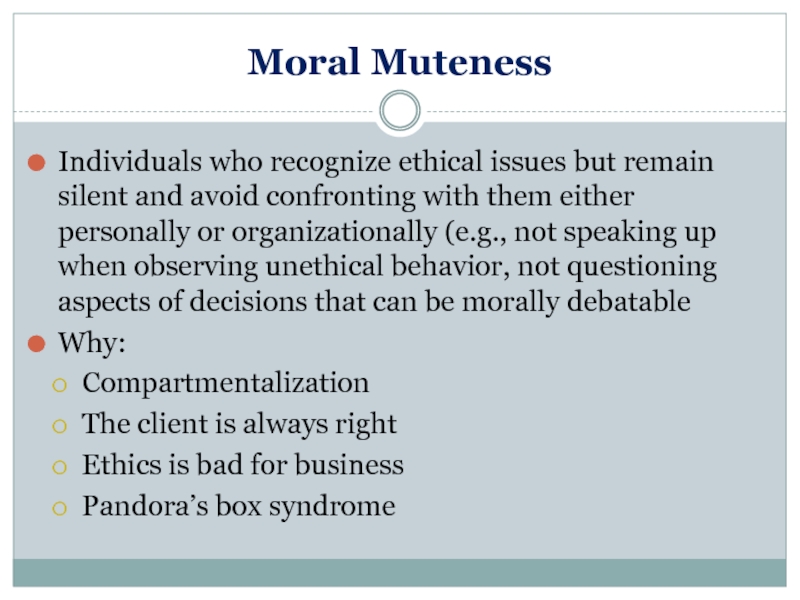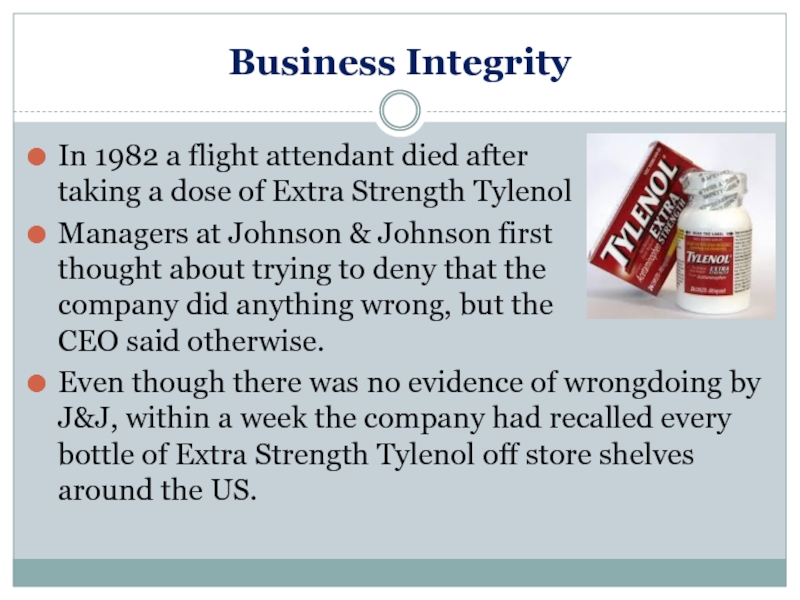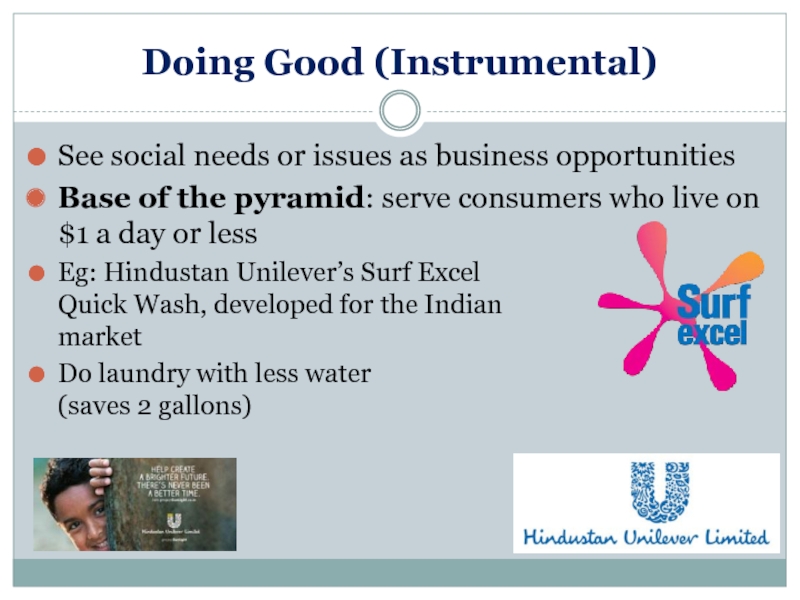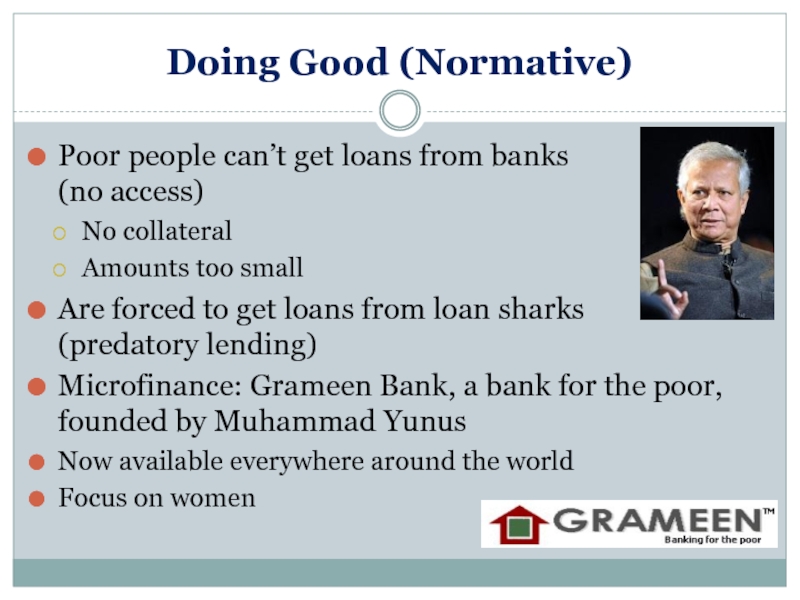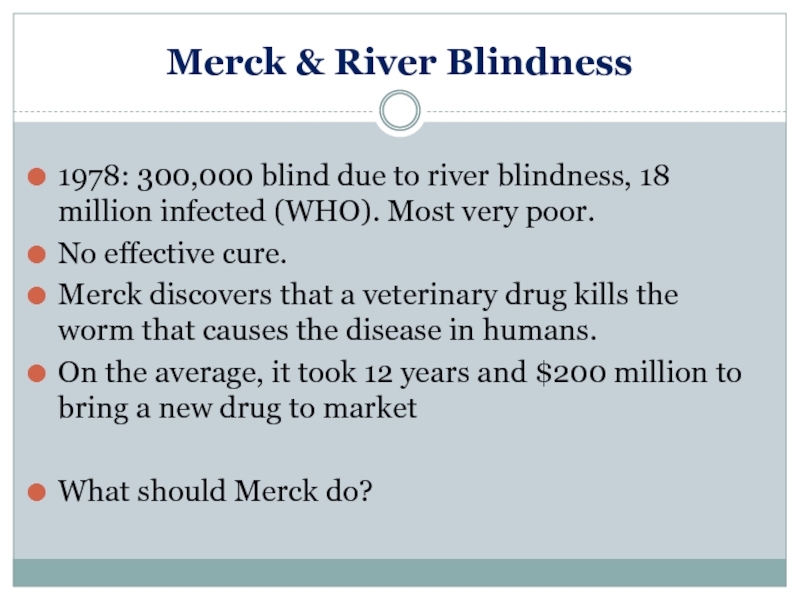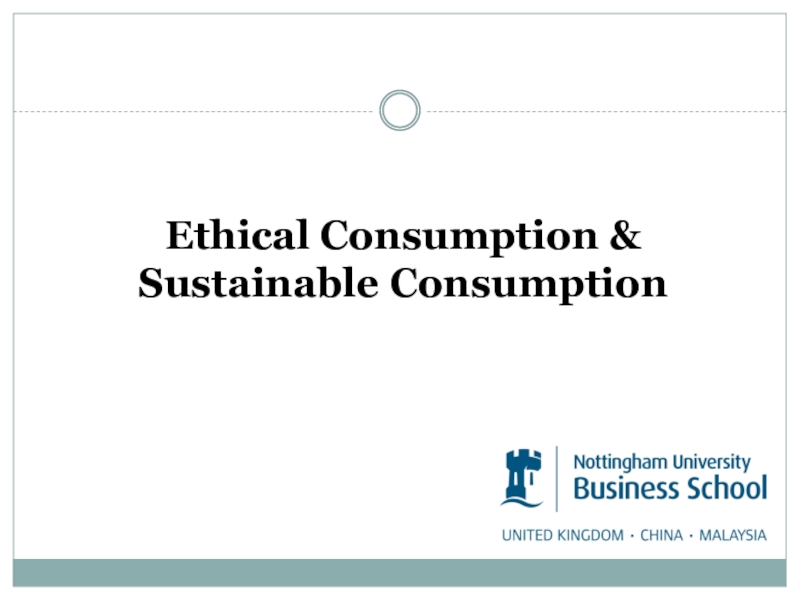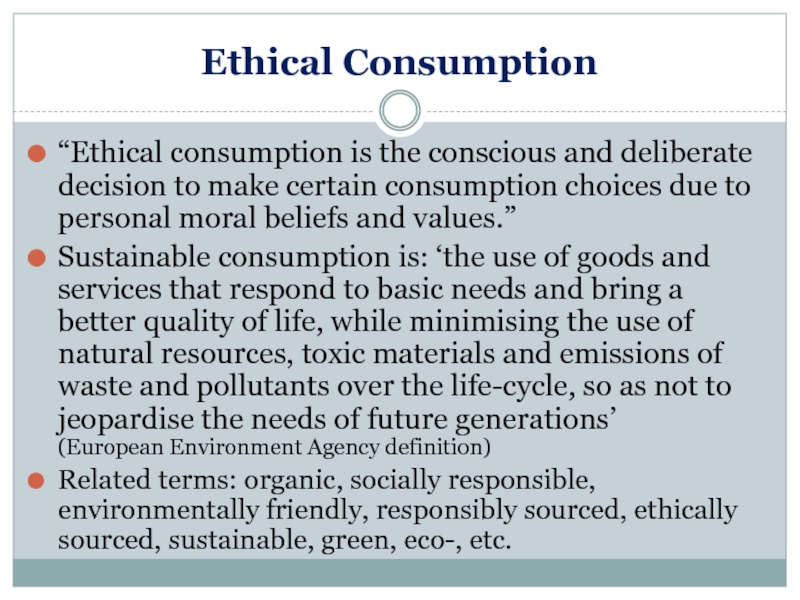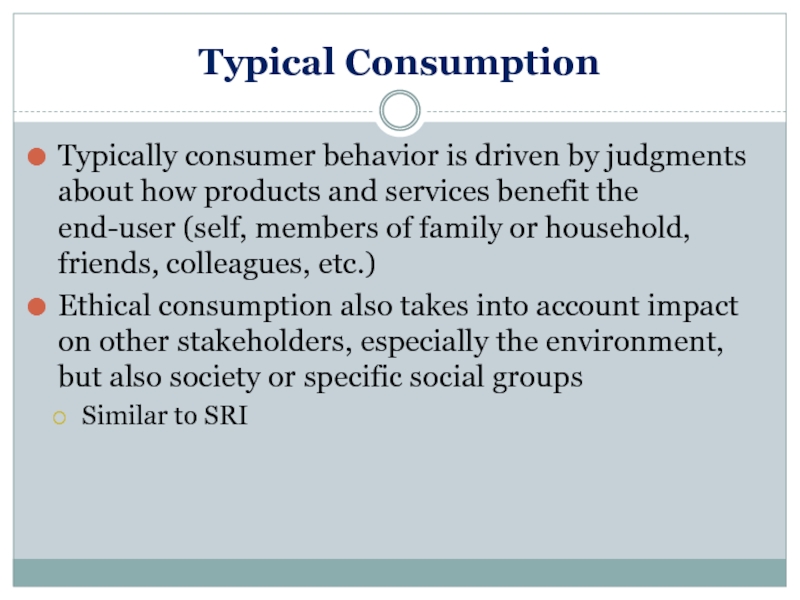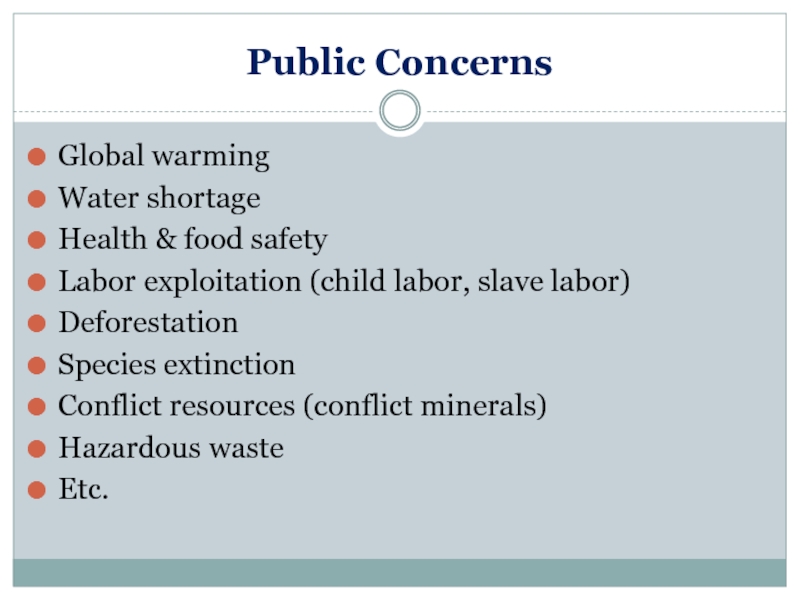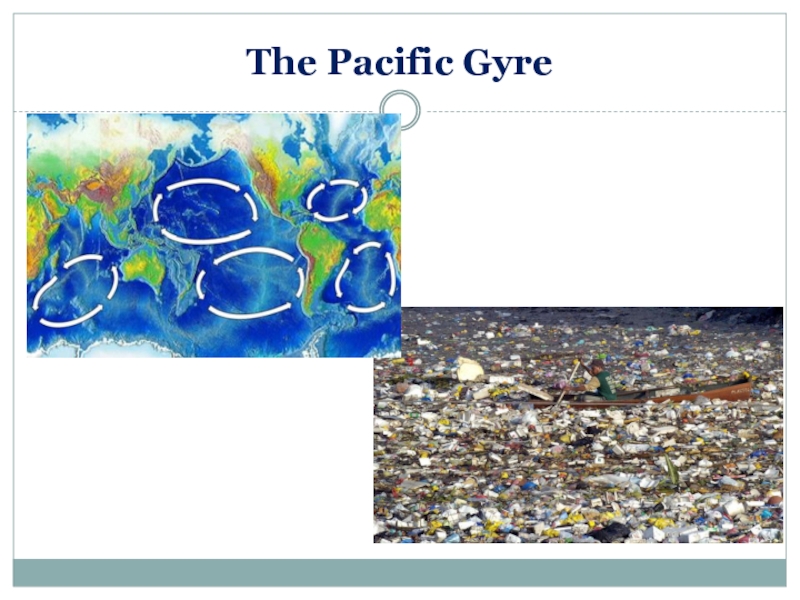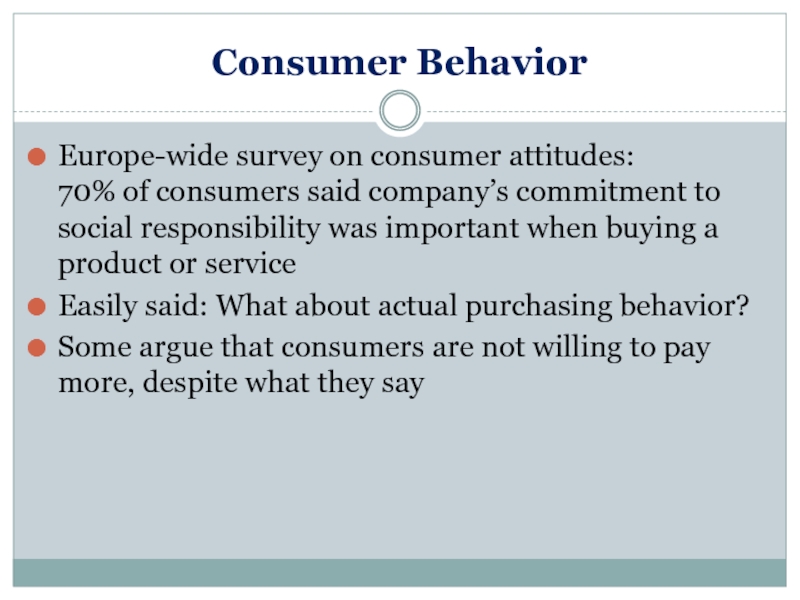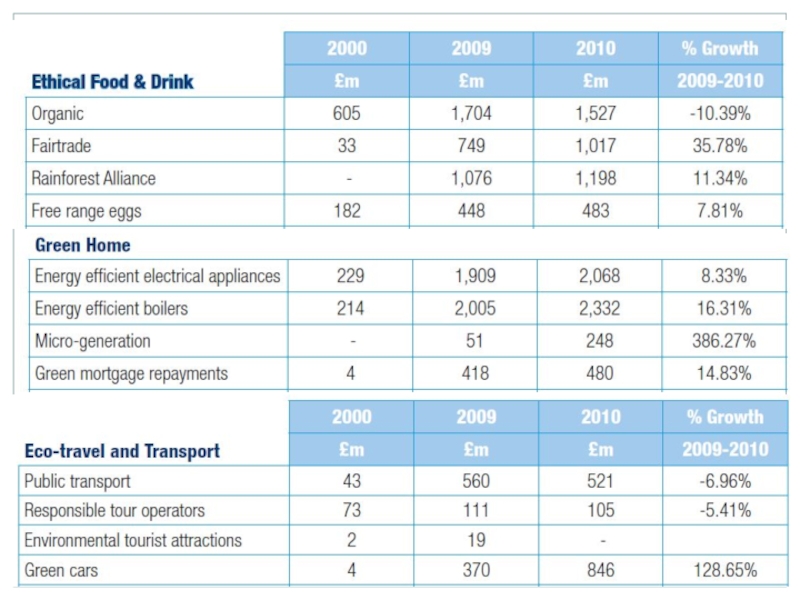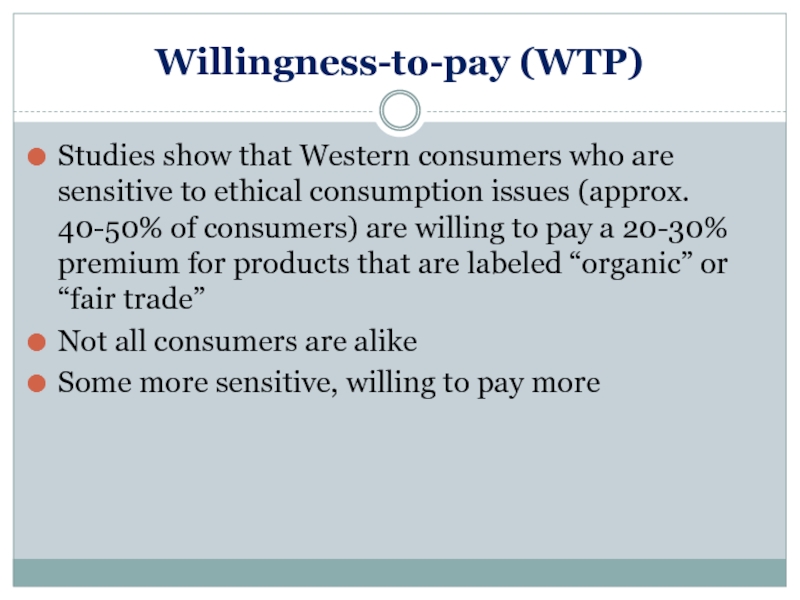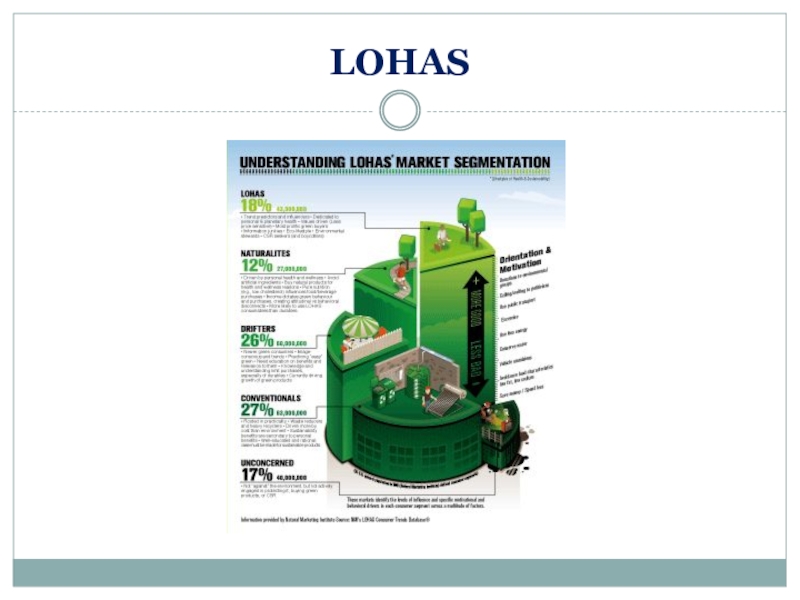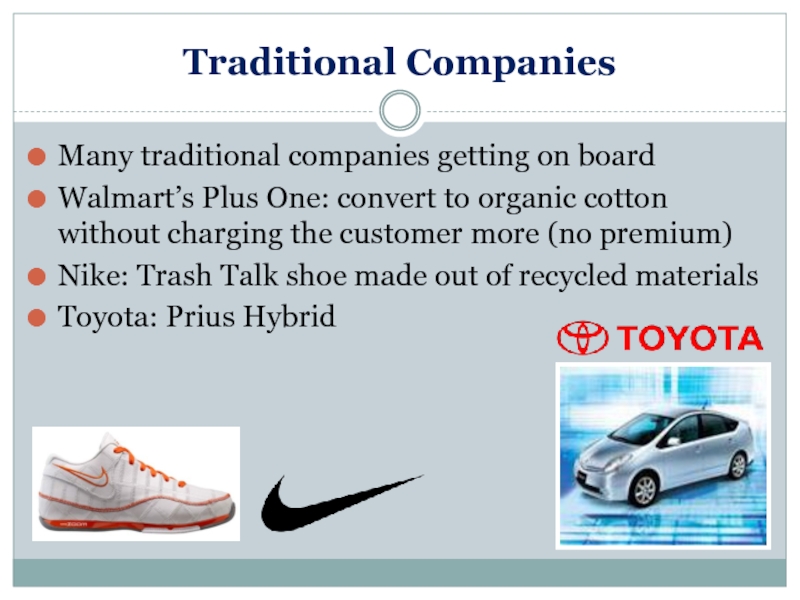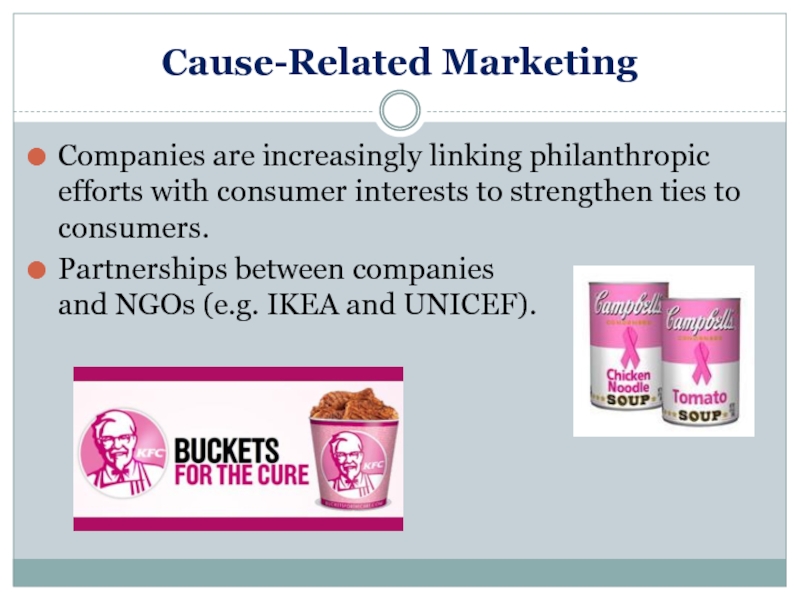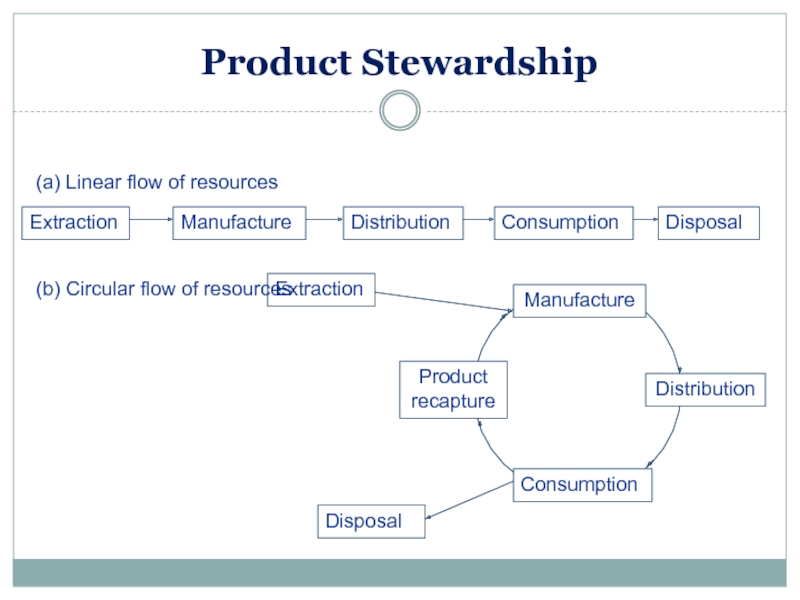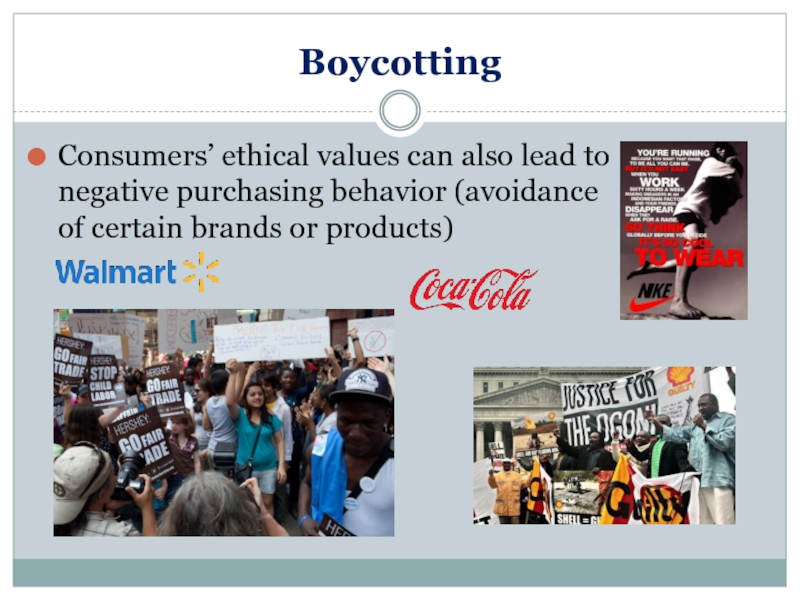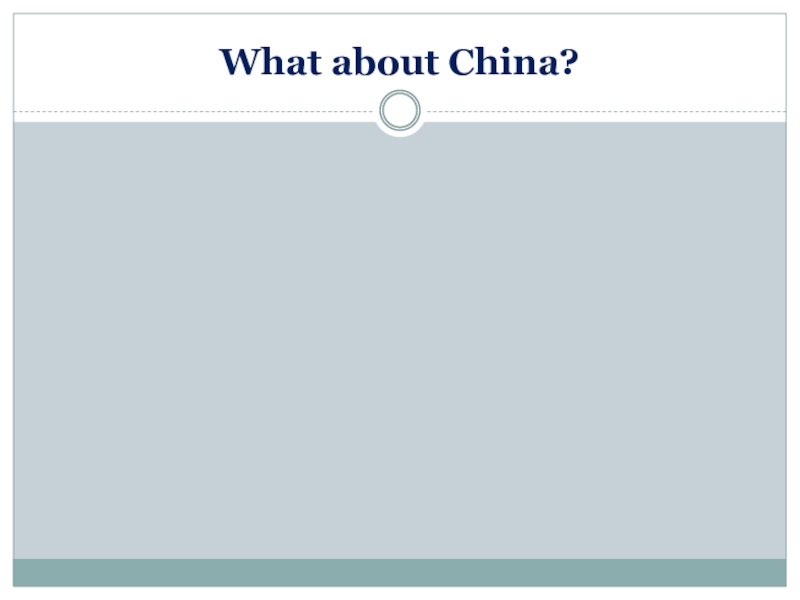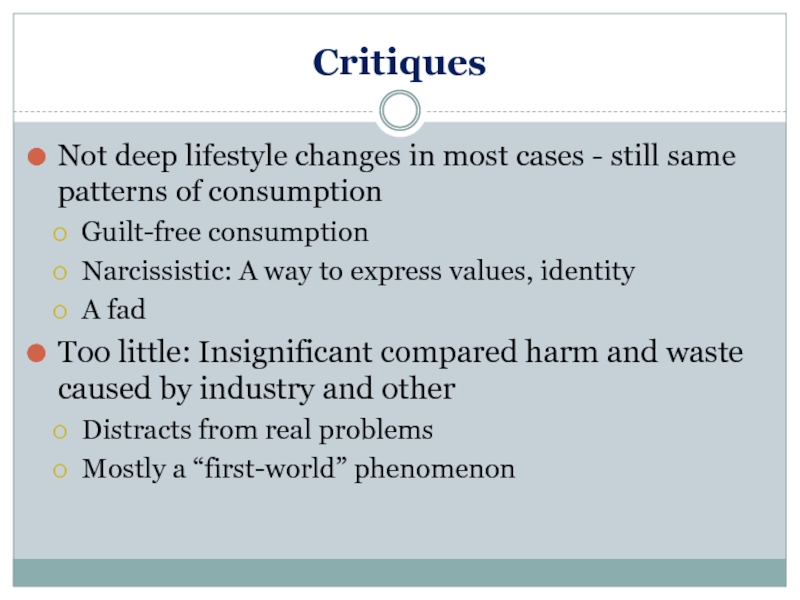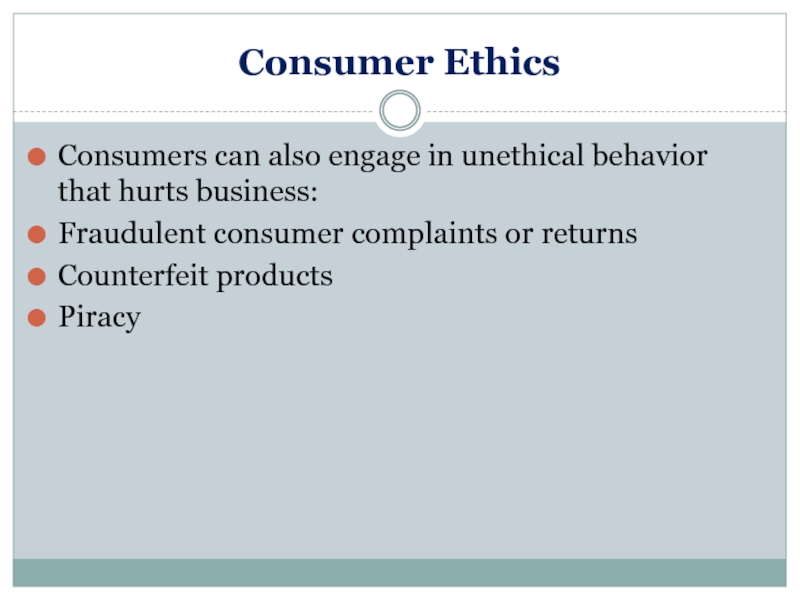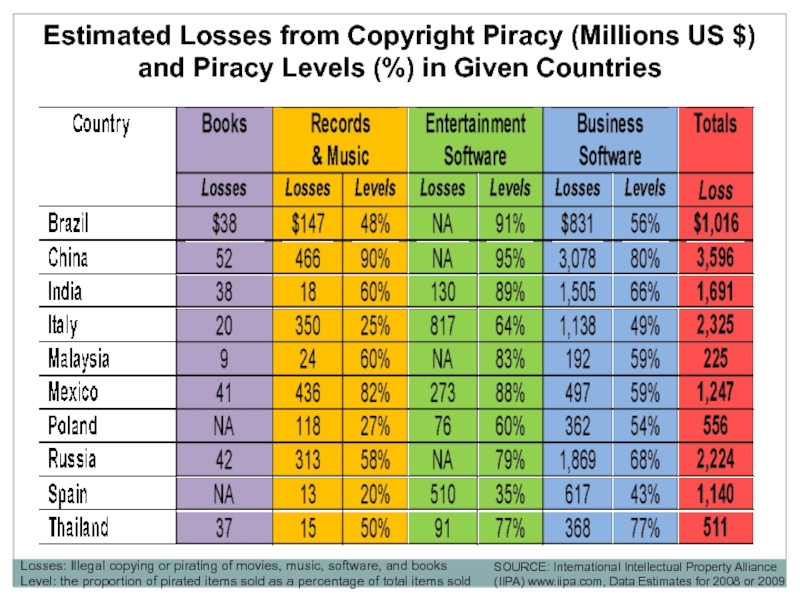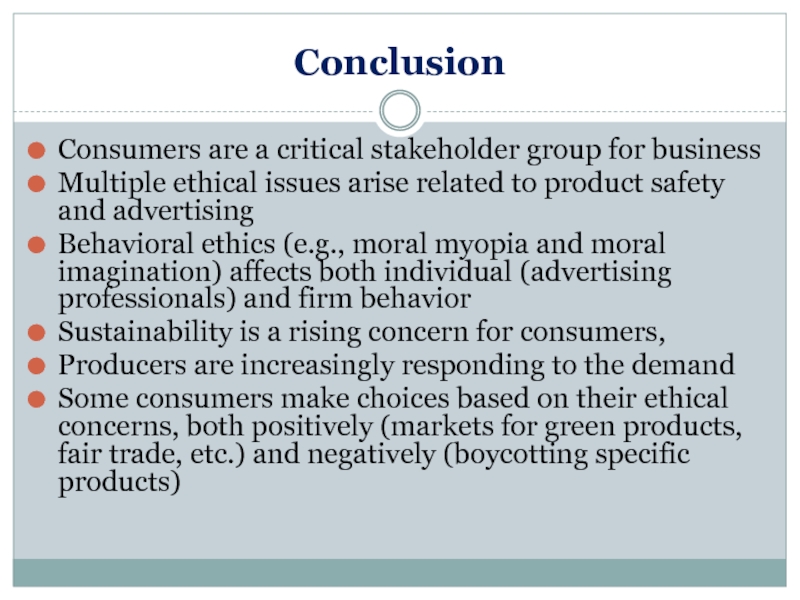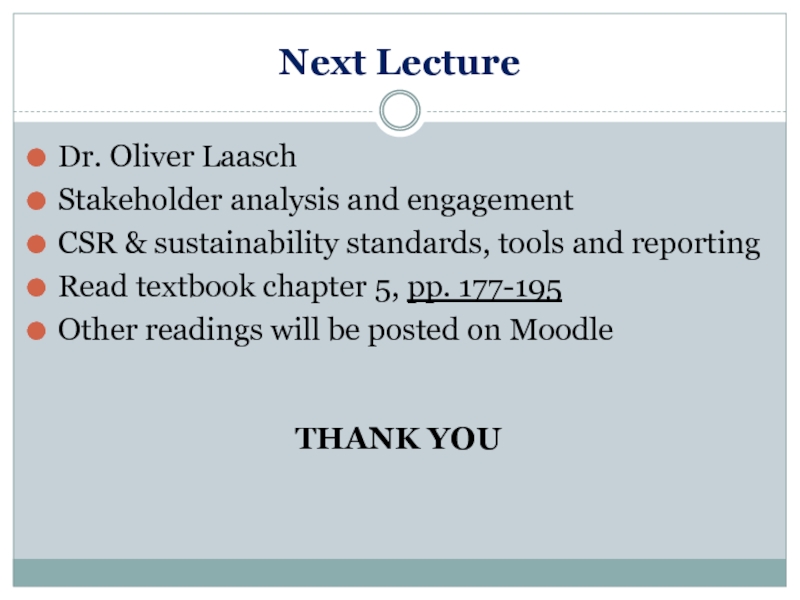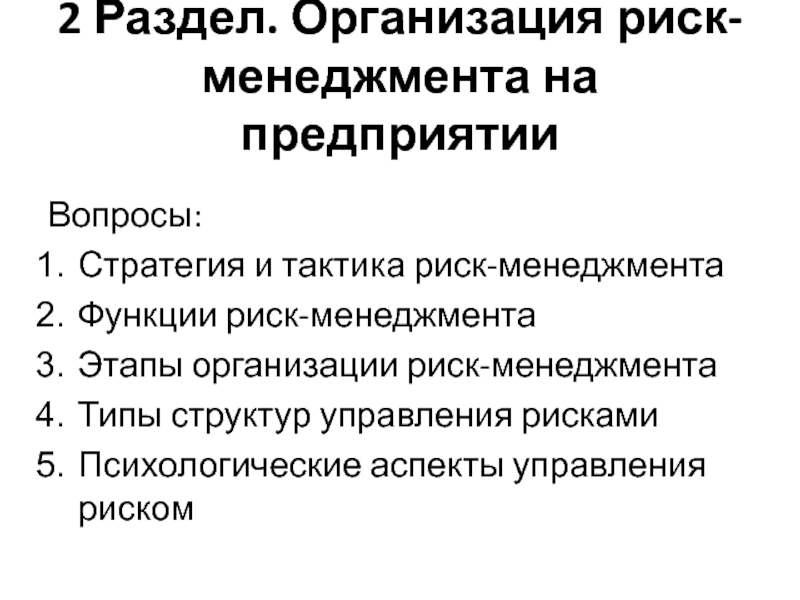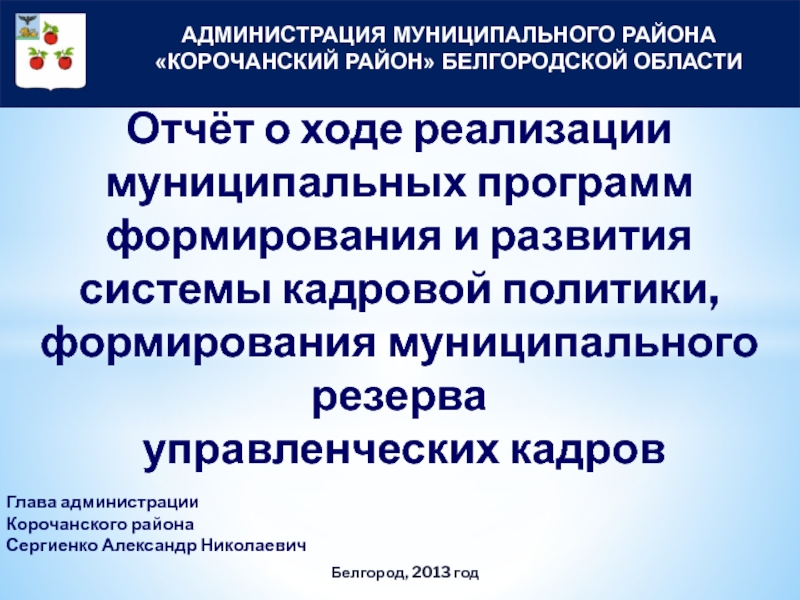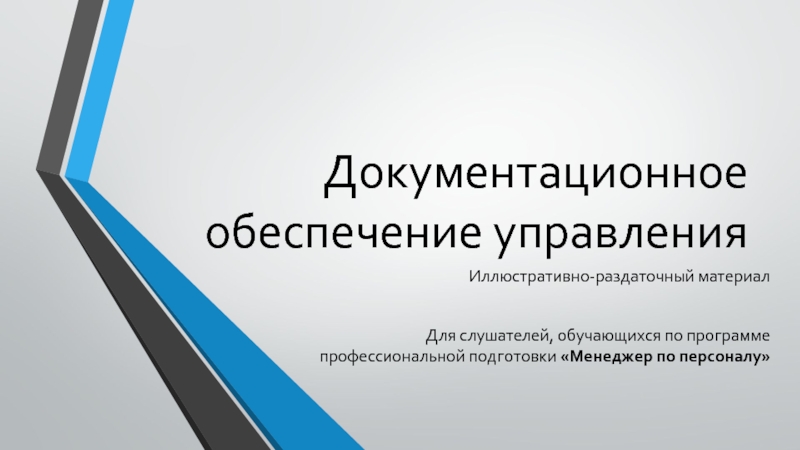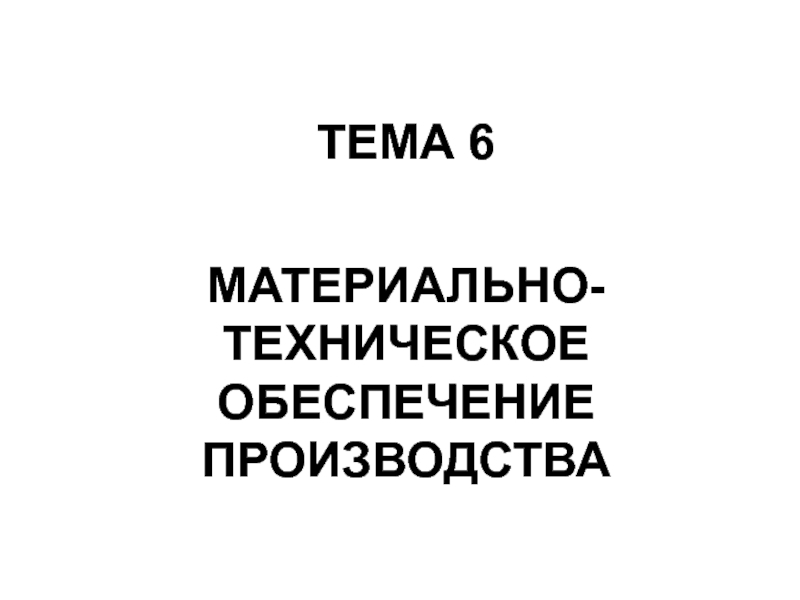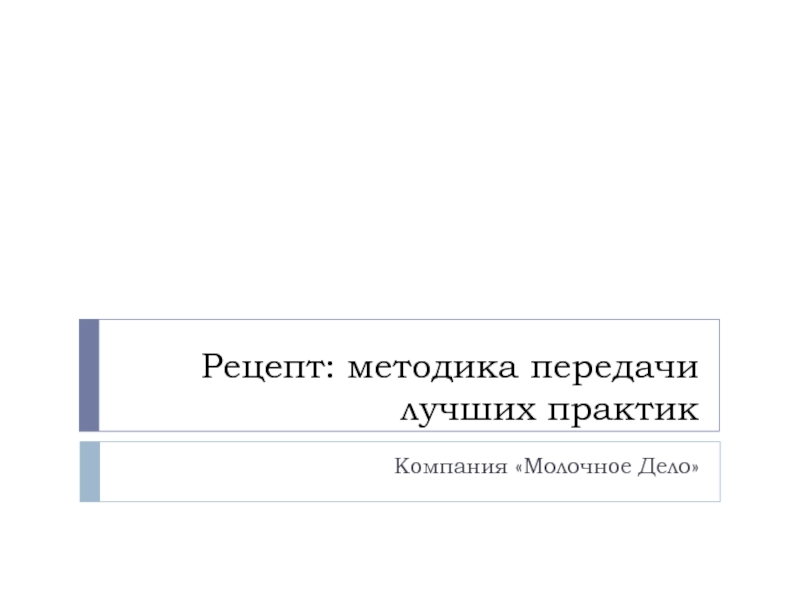- Главная
- Разное
- Дизайн
- Бизнес и предпринимательство
- Аналитика
- Образование
- Развлечения
- Красота и здоровье
- Финансы
- Государство
- Путешествия
- Спорт
- Недвижимость
- Армия
- Графика
- Культурология
- Еда и кулинария
- Лингвистика
- Английский язык
- Астрономия
- Алгебра
- Биология
- География
- Детские презентации
- Информатика
- История
- Литература
- Маркетинг
- Математика
- Медицина
- Менеджмент
- Музыка
- МХК
- Немецкий язык
- ОБЖ
- Обществознание
- Окружающий мир
- Педагогика
- Русский язык
- Технология
- Физика
- Философия
- Химия
- Шаблоны, картинки для презентаций
- Экология
- Экономика
- Юриспруденция
Consumers and business ethics презентация
Содержание
- 1. Consumers and business ethics
- 2. Consumers and Business Ethics
- 3. Today’s Lecture Discuss the role of consumers
- 4. Introduction The rights of consumers: ethical responsibilities
- 5. Consumers as Primary Stakeholders Consumers are primary
- 6. Do Consumers Need Protection? Perfect market (perfect
- 7. Trust in Business and Government
- 8. Trust in China
- 9. Trust Issues in China
- 10. China: Consumers & Food Safety “More than
- 11. China: Consumers & Food Safety
- 12. Trust in Chinese Companies
- 13. Discussion Does the market provide sufficient protection
- 14. Consumer Rights At the most basic level,
- 15. Consumer Rights At the most basic level,
- 16. Legal Issues Health and safety Credit
- 17. Ethical Issues Consumer Bill of Rights Right
- 18. Right to Choose To the extent possible,
- 19. Right to Safety This means that businesses
- 20. Right to be Informed Any information, whether
- 21. Right to be Heard Relates to opportunities
- 22. Right to Seek Redress Consumers have the
- 23. Right to Privacy Relates to consumers’ awareness
- 24. Ethical Issues in Marketing
- 25. Common Problems Information asymmetry
- 26. Sanlu Milk Who is punished?
- 27. Ford Pinto
- 28. Ethics and Advertising (Marketing Communications)
- 29. Marketing communications aim to (two-fold function): Inform
- 30. Criticisms of advertising broken down into two
- 31. Consumer Vulnerability Some populations of consumers are
- 32. Consumer Sovereignty Test
- 33. Social Issues in Marketing Concerns that marketing
- 34. Advertising Practitioners and Ethics How do advertising
- 35. Moral Myopia Distortion of moral vision, leading
- 36. Moral Muteness Individuals who recognize ethical issues
- 37. Business Integrity In 1982 a flight attendant
- 38. Doing Good (Instrumental) See social needs or
- 39. Doing Good (Normative) Poor people can’t get
- 40. Merck & River Blindness 1978: 300,000 blind
- 41. Ethical Consumption & Sustainable Consumption
- 42. Ethical Consumption “Ethical consumption is the conscious
- 43. Typical Consumption Typically consumer behavior is driven
- 44. Assumptions Old patterns of production and consumption
- 45. Public Concerns Global warming Water shortage Health
- 46. The Pacific Gyre
- 47. Consumer Behavior Europe-wide survey on consumer attitudes:
- 48. Consumer Behavior
- 49. Willingness-to-pay (WTP) Studies show that Western consumers
- 50. LOHAS
- 51. Traditional Companies Many traditional companies getting on
- 52. New Companies TerraCycle: Make better products for
- 53. Cause-Related Marketing Companies are increasingly linking philanthropic
- 54. Product Stewardship (a) Linear flow of resources
- 55. Cradle-to-Cradle Interface carpets: Lease carpets (rather than
- 56. Boycotting Consumers’ ethical values can also lead
- 57. What about China?
- 58. Critiques Not deep lifestyle changes in most
- 59. Consumer Ethics Consumers can also engage in
- 60. Copyright © 2014 Pearson Education Top Counterfeit Commodities Seized at US Borders
- 61. Estimated Losses from Copyright Piracy (Millions US
- 62. Why do we buy illegal products? Original
- 63. Conclusion Consumers are a critical stakeholder group
- 64. Next Lecture Dr. Oliver Laasch Stakeholder analysis
Слайд 3Today’s Lecture
Discuss the role of consumers as a key stakeholder of
Are consumers treated ethically?
Ethical aspects of marketing Advertising practitioners and ethics
Do the ethical concerns of consumers affect their behavior? Ethical and sustainable consumption
Слайд 4Introduction
The rights of consumers: ethical responsibilities of governments and firms toward
The ethical values of consumers: consumers’ goals and preferences as expressed through consumer behavior
Слайд 5Consumers as Primary Stakeholders
Consumers are primary stakeholders because their awareness, purchase,
Consumers and business are connected by an economic relationship.
Consumers exchange money for goods or services.
Consumers expect the products they purchase to perform as guaranteed by the sellers.
(C)Houghton Mifflin Company. All rights reserved
Слайд 6Do Consumers Need Protection?
Perfect market (perfect competition): Consumers spend their money
Consumers buy good products and services, given price, and stay away from bad products and services
Firms that serve consumers are rewarded
Firms that harm consumers are punished
Market self-regulates, self-corrects
Libertarian view NO
Слайд 10China: Consumers & Food Safety
“More than 70 percent of Shanghai residents
“The survey of 4,000 people in eight big cities like Shanghai and Beijing found more than 73 percent felt unsafe or very unsafe about food. Most said they think the illegal practices occur in the production and processing of food, which they consider the weakest link in the food supply chain in China.”
“The public also criticized poor access to food safety information.”
Слайд 13Discussion
Does the market provide sufficient protection for consumers? Or are additional
Why?
Who?
Слайд 14Consumer Rights
At the most basic level, consumers have a right to
Consumers expect the products they purchase to perform as guaranteed by the sellers.
In the early 1900s “let the buyer beware” typified the power that business- not consumers- wielded in exchange relationships. This is still true in less developed parts of the world.
(C)Houghton Mifflin Company. All rights reserved
Слайд 15Consumer Rights
At the most basic level, consumers have a right to
Manufacturers should exercise due care to take all reasonable steps to ensure that their products are free from defects and safe to use (Boatright, 2009)
Contrast with caveat emptor (“let the buyer beware”) view of consumer rights, common in the early 1900s.
Still true in less developed parts of the world.
Слайд 16Legal Issues
Health and safety
Credit and ownership
Marketing, advertising, and packaging
Product liability
Guarantees and
(C)Houghton Mifflin Company. All rights reserved
Слайд 17Ethical Issues
Consumer Bill of Rights
Right to choose
Right to safety
Right to be
Right to be heard
Right to seek redress
Right to privacy
(C)Houghton Mifflin Company. All rights reserved
Слайд 18Right to Choose
To the extent possible, consumers have the opportunity to
Right to fair prices
Right of access
(C)Houghton Mifflin Company. All rights reserved
Слайд 19Right to Safety
This means that businesses have an obligation not to
(C)Houghton Mifflin Company. All rights reserved
Слайд 20Right to be Informed
Any information, whether communicated in written or verbal
Transparency
(C)Houghton Mifflin Company. All rights reserved
Слайд 21Right to be Heard
Relates to opportunities for consumers to communicate or
This implies that governments have the responsibility to listen and take consumer issues into account.
(C)Houghton Mifflin Company. All rights reserved
Слайд 22Right to Seek Redress
Consumers have the right to express dissatisfaction and
(C)Houghton Mifflin Company. All rights reserved
Слайд 23Right to Privacy
Relates to consumers’ awareness of how personal data are
Think about apps on your phone: Alipay, WeChat, Didi or Uber
Banks and credit card companies
Free email providers like Gmail, qq.com, 123.com
(C)Houghton Mifflin Company. All rights reserved
Слайд 25Common Problems
Information asymmetry
-> Incomplete information, e.g.
Cigarettes, tainted milk, Ford Pinto, “gutter oil”
Monopoly, oligarchy or collusion (price setting) -> No choice, high prices
HIV drugs
Extreme consequences -> No redress
Слайд 29Marketing communications aim to (two-fold function):
Inform consumers about goods and services
Persuade
Some exaggeration etc. is allowable (and indeed sometimes enjoyable)
“Deception occurs when a marketing communication either creates, or takes advantage of, a false belief that substantially interferes with the ability of people to make rational consumer choices” (Boatright, 2009)
Ethics & Marketing Communications
Слайд 30Criticisms of advertising broken down into two levels
Individual
Concerned with misleading or
Social
Concerned with the aggregate social and cultural impacts, such as promoting materialism or unhealthy lifestyles
Ethics & Marketing Communications
Слайд 31Consumer Vulnerability
Some populations of consumers are vulnerable
Limitation on informed decision making
Children
Lack of sufficient education
Elderly: Easily confused or manipulated
Exceptional physical or emotional need (e.g., recently bereaved)
Exceptional physical need (e.g., seriously ill, addicted)
Слайд 33Social Issues in Marketing
Concerns that marketing communications:
Are intrusive and unavoidable
Create artificial
Reinforce consumerism and materialism
Create insecurity and perpetual dissatisfaction
Perpetuate social stereotypes
Such criticisms have been common for at least the last 30 years
Слайд 34Advertising Practitioners and Ethics
How do advertising professionals perceive, process and think
Study by Drumwright and Murphy (2004) (51 in-depth interviews in 29 advertising agencies in the US) shows that advertising/marketing professionals often exhibit moral myopia and moral muteness
However, there are also important cases of moral imagination
These apply more broadly to consumer issues and firm behavior
Слайд 35Moral Myopia
Distortion of moral vision, leading to difficulty of recognizing ethical
Moral myopia may occur due to rationalization and dismissing potential ethical concerns or responsibility, e.g.:
Consumers are smart: they will not be fooled by a possibly deceptive / unethical advertising message;
Place responsibility on others (society, families, the law, etc.)
What is legal is moral (“We don’t do anything illegal”)
Слайд 36Moral Muteness
Individuals who recognize ethical issues but remain silent and avoid
Why:
Compartmentalization
The client is always right
Ethics is bad for business
Pandora’s box syndrome
Слайд 37Business Integrity
In 1982 a flight attendant died after
taking a dose
Managers at Johnson & Johnson first thought about trying to deny that the company did anything wrong, but the CEO said otherwise.
Even though there was no evidence of wrongdoing by J&J, within a week the company had recalled every bottle of Extra Strength Tylenol off store shelves around the US.
Слайд 38Doing Good (Instrumental)
See social needs or issues as business opportunities
Base of
Eg: Hindustan Unilever’s Surf Excel Quick Wash, developed for the Indian market
Do laundry with less water (saves 2 gallons)
Слайд 39Doing Good (Normative)
Poor people can’t get loans from banks
(no access)
No
Amounts too small
Are forced to get loans from loan sharks (predatory lending)
Microfinance: Grameen Bank, a bank for the poor, founded by Muhammad Yunus
Now available everywhere around the world
Focus on women
Слайд 40Merck & River Blindness
1978: 300,000 blind due to river blindness, 18
No effective cure.
Merck discovers that a veterinary drug kills the worm that causes the disease in humans.
On the average, it took 12 years and $200 million to bring a new drug to market
What should Merck do?
Слайд 42Ethical Consumption
“Ethical consumption is the conscious and deliberate decision to make
Sustainable consumption is: ‘the use of goods and services that respond to basic needs and bring a better quality of life, while minimising the use of natural resources, toxic materials and emissions of waste and pollutants over the life-cycle, so as not to jeopardise the needs of future generations’ (European Environment Agency definition)
Related terms: organic, socially responsible, environmentally friendly, responsibly sourced, ethically sourced, sustainable, green, eco-, etc.
Слайд 43Typical Consumption
Typically consumer behavior is driven by judgments about how products
Ethical consumption also takes into account impact on other stakeholders, especially the environment, but also society or specific social groups
Similar to SRI
Слайд 44Assumptions
Old patterns of production and consumption were based on two tacit
Unlimited resources (water, air, fish, oil, trees, etc.)
Unlimited capacity to absorb waste and by-products
Both these assumption are now known to be false
Many consumers in the industrialized world are becoming aware (even though they are the least affected)
Слайд 45Public Concerns
Global warming
Water shortage
Health & food safety
Labor exploitation (child labor, slave
Deforestation
Species extinction
Conflict resources (conflict minerals)
Hazardous waste
Etc.
Слайд 47Consumer Behavior
Europe-wide survey on consumer attitudes:
70% of consumers said company’s
Easily said: What about actual purchasing behavior?
Some argue that consumers are not willing to pay more, despite what they say
Слайд 49Willingness-to-pay (WTP)
Studies show that Western consumers who are sensitive to ethical
Not all consumers are alike
Some more sensitive, willing to pay more
Слайд 51Traditional Companies
Many traditional companies getting on board
Walmart’s Plus One: convert to
Nike: Trash Talk shoe made out of recycled materials
Toyota: Prius Hybrid
Слайд 52New Companies
TerraCycle: Make better products for home and garden, using only
Tom’s Shoes: One pair donated to a poor person for each pair bought
Слайд 53Cause-Related Marketing
Companies are increasingly linking philanthropic efforts with consumer interests to
Partnerships between companies and NGOs (e.g. IKEA and UNICEF).
Слайд 54Product Stewardship
(a) Linear flow of resources
Extraction
Manufacture
Product recapture
Distribution
Disposal
Consumption
(b) Circular flow of resources
Слайд 55Cradle-to-Cradle
Interface carpets: Lease carpets (rather than sell) to corporate customers and
OAT shoes: made of biodegradable materials. Plant them when you are done with them and they will sprout flowers within days
Слайд 56Boycotting
Consumers’ ethical values can also lead to
negative purchasing behavior (avoidance
Слайд 58Critiques
Not deep lifestyle changes in most cases - still same patterns
Guilt-free consumption
Narcissistic: A way to express values, identity
A fad
Too little: Insignificant compared harm and waste caused by industry and other
Distracts from real problems
Mostly a “first-world” phenomenon
Слайд 59Consumer Ethics
Consumers can also engage in unethical behavior that hurts business:
Fraudulent
Counterfeit products
Piracy
Слайд 61Estimated Losses from Copyright Piracy (Millions US $) and Piracy Levels
Losses: Illegal copying or pirating of movies, music, software, and books
Level: the proportion of pirated items sold as a percentage of total items sold
SOURCE: International Intellectual Property Alliance
(IIPA) www.iipa.com, Data Estimates for 2008 or 2009
Слайд 62Why do we buy illegal products?
Original is too expensive (50.9%)
Good cost/performance
For ‘fun’ (22.8%)
They were a ‘spontaneous’ bargain (17.5%)
Although high-income consumers in well-developed countries can afford the genuine brands, they also buy counterfeits (Gentry, Putrevu, and Shultz 2006; Prendergast, Chuen, and Phau 2002).
Source: Fleisch, E. (2006) Presentation at the MIT Convocation, January 23-24, 2006
Слайд 63Conclusion
Consumers are a critical stakeholder group for business
Multiple ethical issues arise
Behavioral ethics (e.g., moral myopia and moral imagination) affects both individual (advertising professionals) and firm behavior
Sustainability is a rising concern for consumers,
Producers are increasingly responding to the demand
Some consumers make choices based on their ethical concerns, both positively (markets for green products, fair trade, etc.) and negatively (boycotting specific products)
Слайд 64Next Lecture
Dr. Oliver Laasch
Stakeholder analysis and engagement
CSR & sustainability standards, tools
Read textbook chapter 5, pp. 177-195
Other readings will be posted on Moodle
THANK YOU
